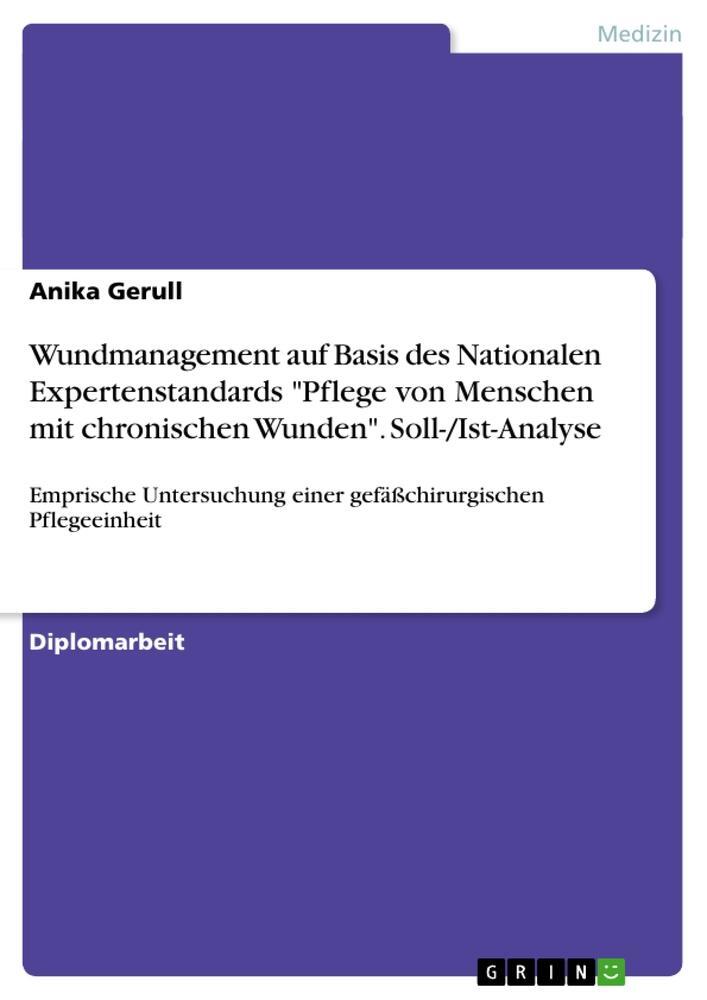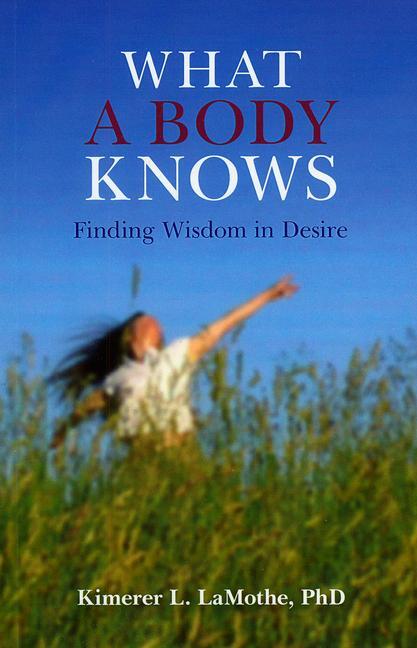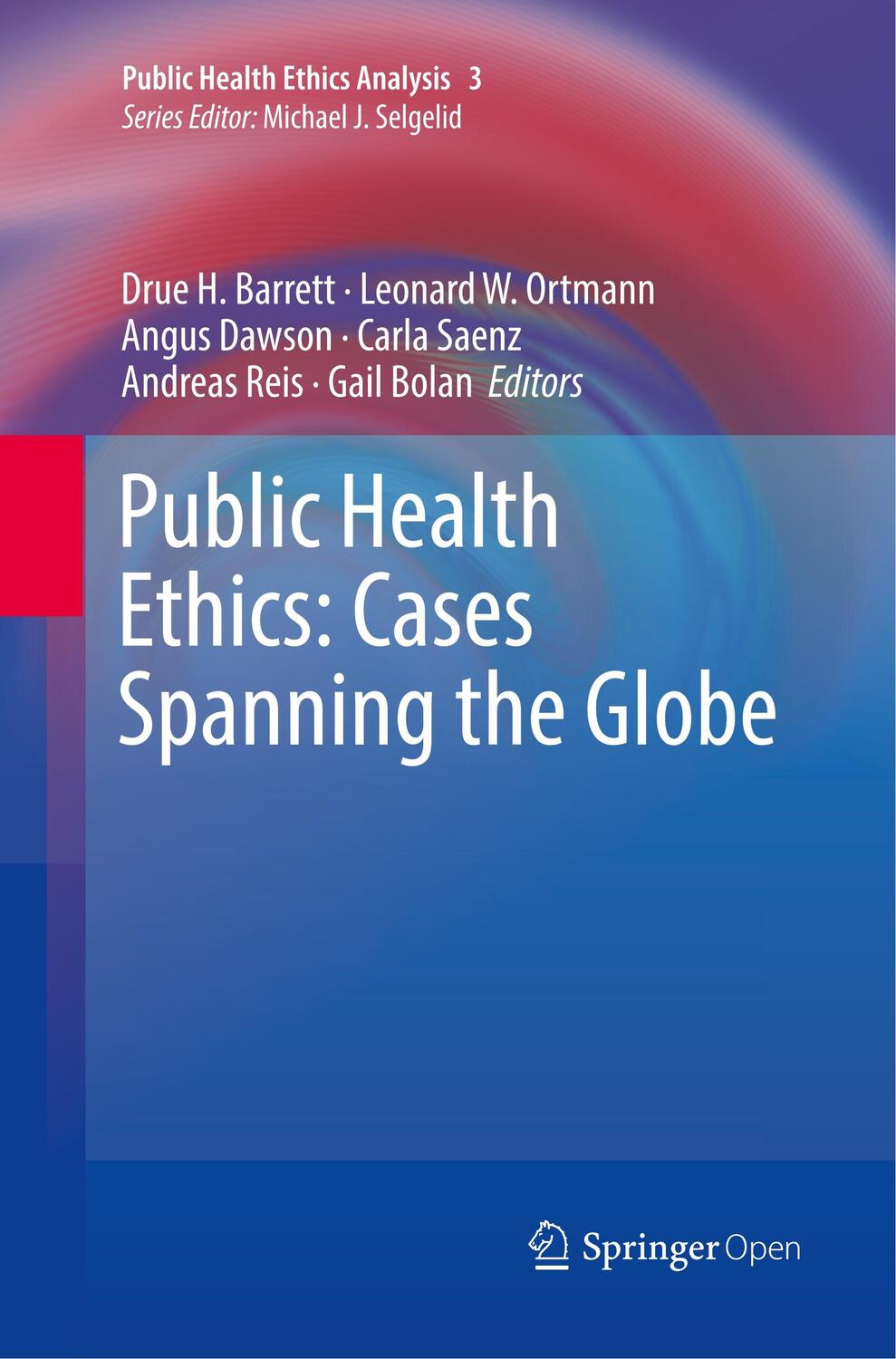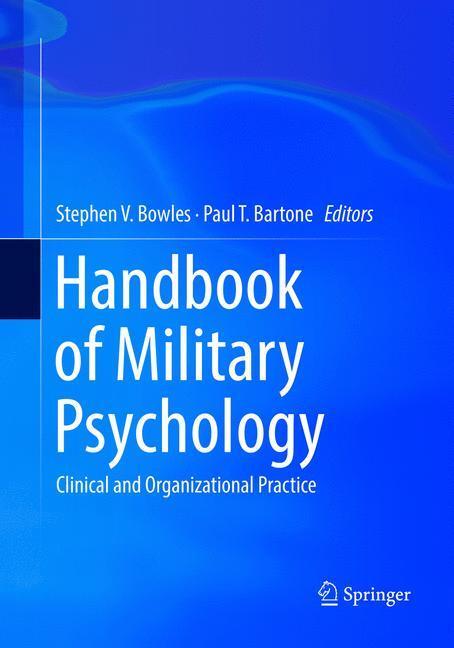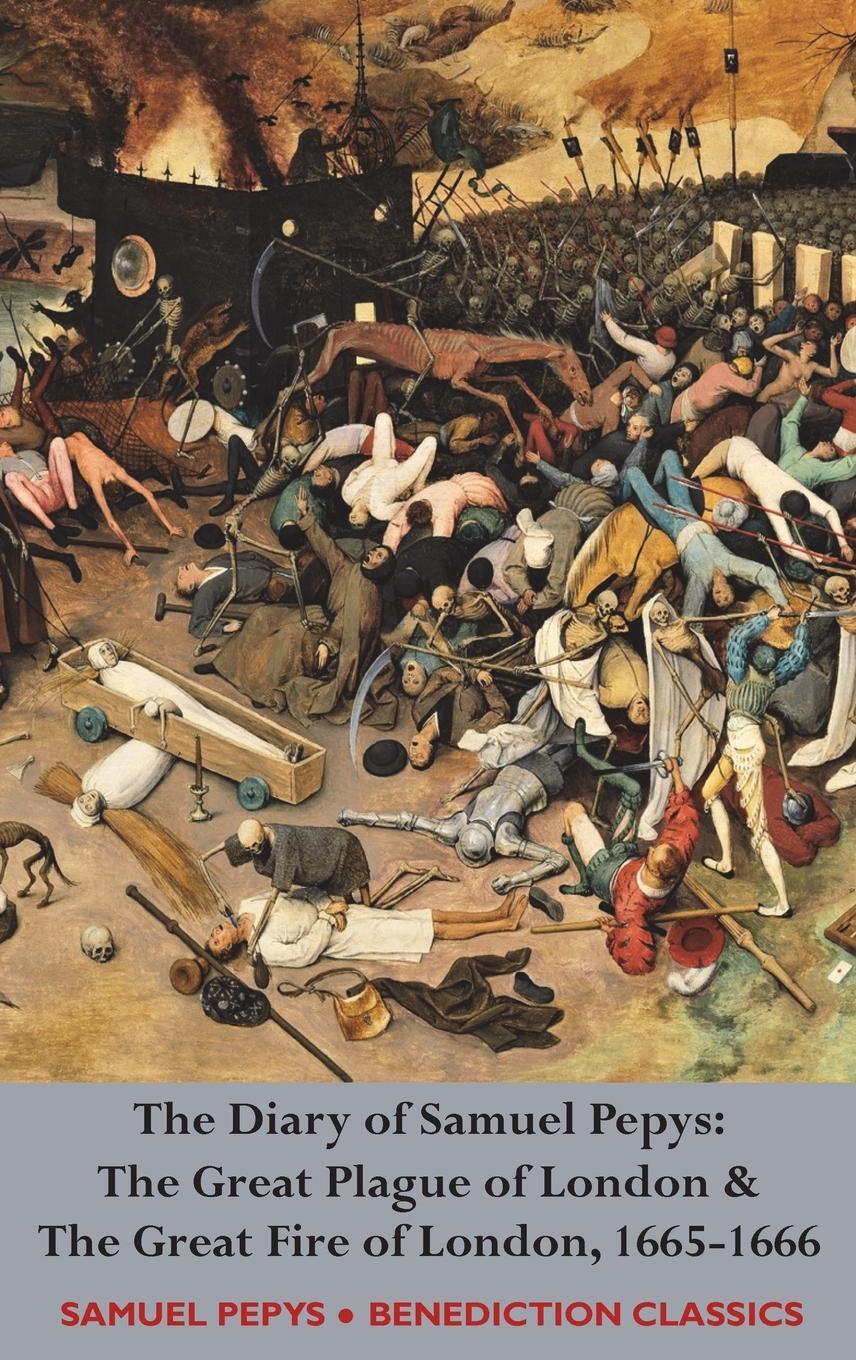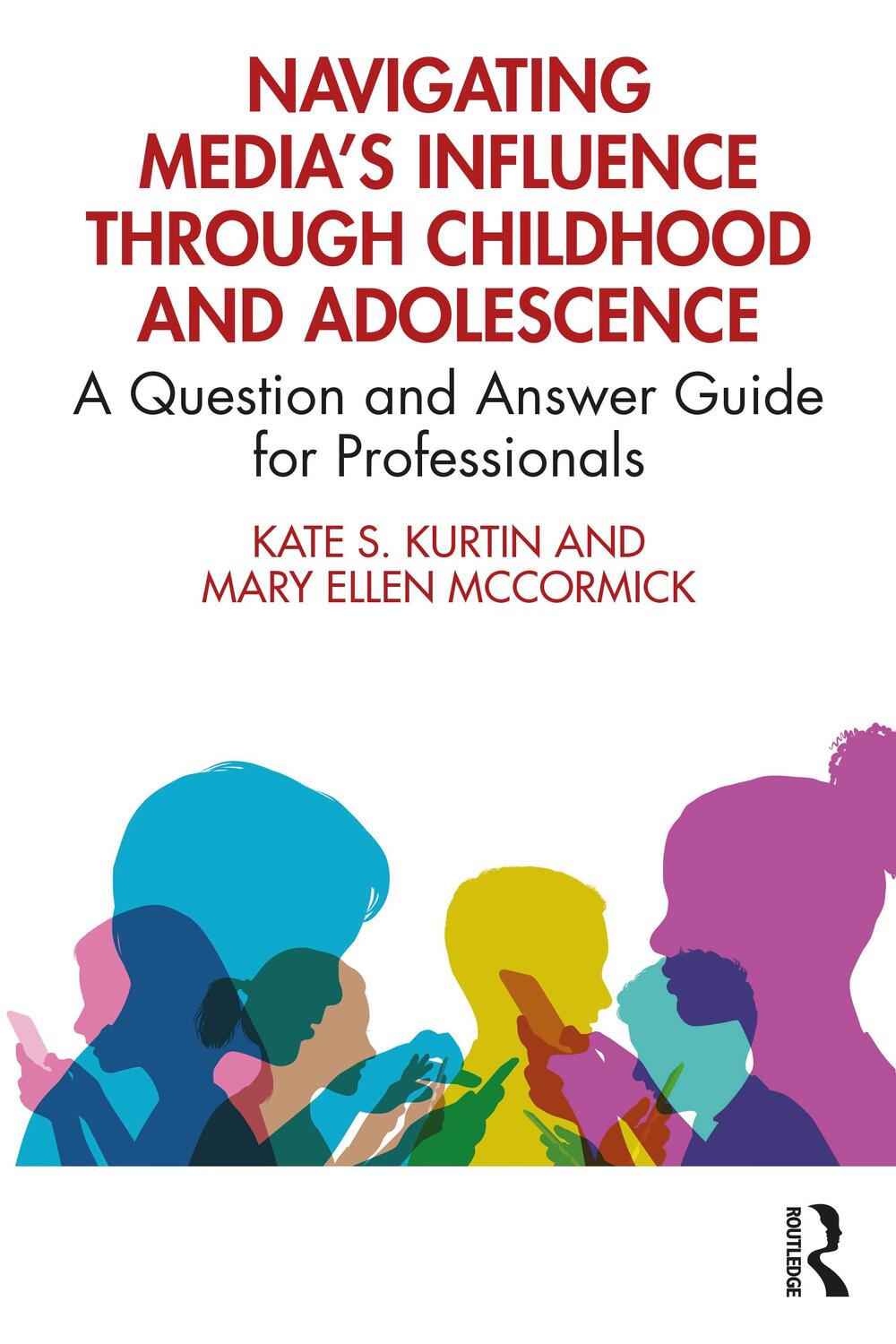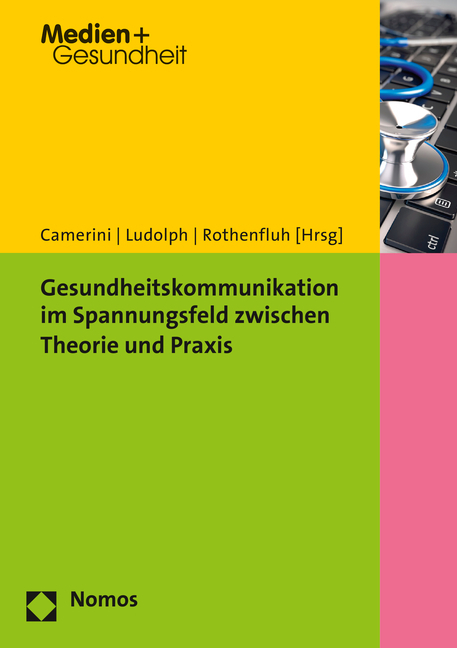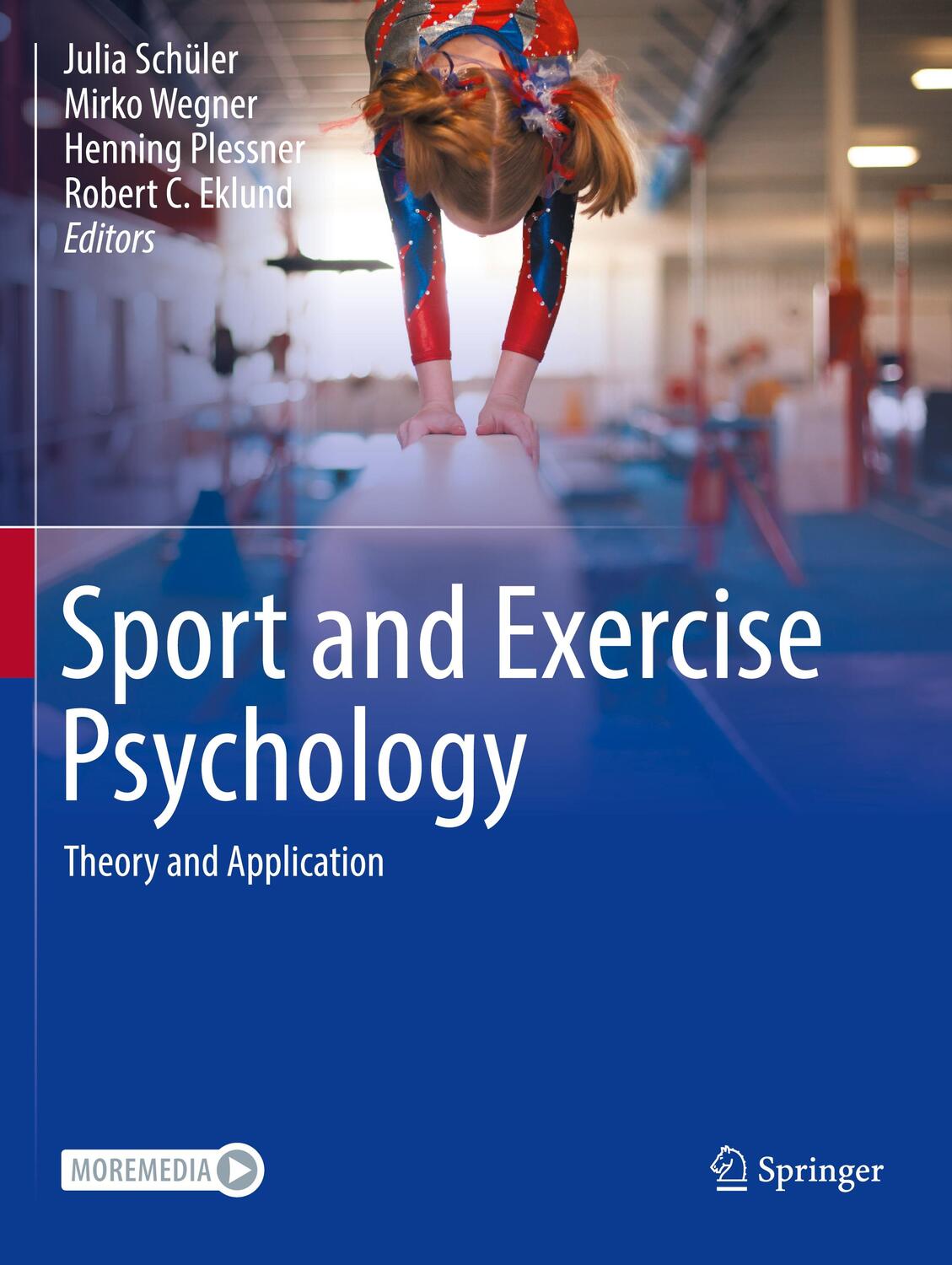Dekorationsartikel gehören nicht zum Leistungsumfang.
Sprache:
Englisch
126,95 €*
Versandkostenfrei per Post / DHL
Lieferzeit 1-2 Wochen
Kategorien:
Beschreibung
Foundations of Physical Activity and Public Health, Second Edition, defines the intersection of kinesiology and public health, helping students understand how the fields interact. It details the planning, implementation, and evaluation of successful physical activity promotion programs.
Foundations of Physical Activity and Public Health, Second Edition, defines the intersection of kinesiology and public health, helping students understand how the fields interact. It details the planning, implementation, and evaluation of successful physical activity promotion programs.
Über den Autor
Harold W. (Bill) Kohl, III, PhD, was a professor of epidemiology and kinesiology at the University of Texas Health Science Center at Houston and the University of Texas at Austin. At the University of Texas Health Science Center, Dr. Kohl also served as the associate regional dean for academic affairs and international health affairs at the Austin regional campus.
His research concentrated on national and international physical activity surveillance and epidemiology issues, as well as program development and evaluation studies for the promotion of school-based physical activity for children and adolescents. He was a fellow of the American College of Sports Medicine (ACSM) and the National Academy of Kinesiology, and served as an elected trustee of ACSM. He was the founder and past president of the International Society for Physical Activity and Health and served as the elected chair of the U.S. National Physical Activity Plan Alliance. He also served in an editorial capacity for several scientific journals and is editor emeritus of the Journal of Physical Activity and Health. He published more than 200 papers, chapters, and monographs in the scientific literature. In 2018 he coauthored the textbook Foundations of Kinesiology.
Bill Kohl passed away in 2023.
Tinker D. Murray, PhD, is a professor emeritus and honorary professor of international studies in health and human performance at Texas State University in San Marcos. He earned his PhD in physical education from Texas A&M University in 1984. His research interests include school-based and clinical-based youth physical activity and interventions with public health linkages for the prevention of obesity and diabetes, continuing education opportunities for coaching education, and personal fitness and training applications related to exercise physiology.
From 1982 to 1984, Murray served as director of cardiac rehabilitation at Brooke Army Medical Center, where he was twice recognized for his exceptional performance. He began his career at Texas State University (formerly Southwest Texas State), where he served as the director of employee wellness from 1984 to 1988 and director of the exercise performance laboratory from 1984 to 2000. He was a volunteer assistant cross country and track coach at Southwest Texas State from 1985 to 1988 and helped win three Gulf Star Conference titles.
From 1985 to 1988, he was a subcommittee member for the Governor's Commission on Physical Fitness that developed the Fit Youth Today program. He served as lecturer and examiner for the USA Track and Field Level 2 coaching certification program from 1988 to 2008 and as the vice chair of the Governor's Commission on Physical Fitness in Texas from 1993 to 1994. He worked with the Texas High School Coaches Association (THSCA) from 2003 to 2013 as a facilitator with the Professional Development Cooperative, which promoted continuing education opportunities.
Murray is a fellow of the American College of Sports Medicine (ACSM) and is certified as an ACSM program director. He was a two-time president of the Texas regional chapter of ACSM (1987 and 1994). He served on the national ACSM board of trustees from 1998 to 2001. In the fall of 2003, he was a guest researcher at the Centers for Disease Control and Prevention (CDC) Division of Nutrition and Physical Activity. He has been actively involved with the International Society for Physical Activity and Health (ISPAH) and has attended several biannual meetings of the International Congress on Physical Activity and Public Health.
Murray retired from Texas State University in 2018 and was named a professor emeritus and honorary professor of international studies. He continues to remain physically active by cycling daily, jogging often, and lifting weights twice a week. He remains academically active by contributing to scholarly presentations and publications that promote physical active lifestyles.
Deborah Salvo, PhD, is an assistant professor of public health at the Brown School at Washington University in St. Louis, where she is a faculty scholar of the Prevention Research Center, the Center for Diabetes Translation Research, and the Institute for Public Health. Before this appointment, she held positions at the University of Texas School Health Science Center in Austin, Stanford University's Prevention Research Center, and the National Institute of Public Health of Mexico.
Salvo is a native of Mexico City, Mexico, and earned her bachelor's degree in nutrition and food sciences from Universidad Iberoamericana. She earned her doctorate in biological and biomedical sciences (nutrition and health sciences, public health and epidemiology track) from Emory University in 2013. Her interests lie in understanding the role of built environment on physical activity and health, and in using this evidence to resolve global health disparities. Her work ranges from local projects to multisite international consortia. She has expertise in using, improving, and developing novel methodological approaches that combine physical activity and spatial epidemiological tools to address complex questions on the effects of context on health. Throughout her career, she has facilitated and led international collaborations to support the growth of the field of physical activity and public health on a global scale, with special emphasis on low- and middle-income countries and populations.
Salvo is the current chair of the Council on Environment and Physical Activity within the International Society for Physical Activity and Health. She is also part of the steering committee of the Global Observatory for Physical Activity, and she is an active member of the Our Voice Global Network. Salvo serves as associate editor for Preventing Chronic Disease, an official scientific journal of the Centers for Disease Control and Prevention. Throughout her career, she has served as technical advisor on physical activity and the built environment for several agencies, including the Centers for Disease Control and Prevention, the Fogarty International Center within the National Institutes of Health, the National Institute of Public Health of Mexico, and the World Health Organization. Salvo was a contributing author to the second series on physical activity published by The Lancet in 2016, which convened global experts to present the latest evidence of the important role of physical activity for public health.
His research concentrated on national and international physical activity surveillance and epidemiology issues, as well as program development and evaluation studies for the promotion of school-based physical activity for children and adolescents. He was a fellow of the American College of Sports Medicine (ACSM) and the National Academy of Kinesiology, and served as an elected trustee of ACSM. He was the founder and past president of the International Society for Physical Activity and Health and served as the elected chair of the U.S. National Physical Activity Plan Alliance. He also served in an editorial capacity for several scientific journals and is editor emeritus of the Journal of Physical Activity and Health. He published more than 200 papers, chapters, and monographs in the scientific literature. In 2018 he coauthored the textbook Foundations of Kinesiology.
Bill Kohl passed away in 2023.
Tinker D. Murray, PhD, is a professor emeritus and honorary professor of international studies in health and human performance at Texas State University in San Marcos. He earned his PhD in physical education from Texas A&M University in 1984. His research interests include school-based and clinical-based youth physical activity and interventions with public health linkages for the prevention of obesity and diabetes, continuing education opportunities for coaching education, and personal fitness and training applications related to exercise physiology.
From 1982 to 1984, Murray served as director of cardiac rehabilitation at Brooke Army Medical Center, where he was twice recognized for his exceptional performance. He began his career at Texas State University (formerly Southwest Texas State), where he served as the director of employee wellness from 1984 to 1988 and director of the exercise performance laboratory from 1984 to 2000. He was a volunteer assistant cross country and track coach at Southwest Texas State from 1985 to 1988 and helped win three Gulf Star Conference titles.
From 1985 to 1988, he was a subcommittee member for the Governor's Commission on Physical Fitness that developed the Fit Youth Today program. He served as lecturer and examiner for the USA Track and Field Level 2 coaching certification program from 1988 to 2008 and as the vice chair of the Governor's Commission on Physical Fitness in Texas from 1993 to 1994. He worked with the Texas High School Coaches Association (THSCA) from 2003 to 2013 as a facilitator with the Professional Development Cooperative, which promoted continuing education opportunities.
Murray is a fellow of the American College of Sports Medicine (ACSM) and is certified as an ACSM program director. He was a two-time president of the Texas regional chapter of ACSM (1987 and 1994). He served on the national ACSM board of trustees from 1998 to 2001. In the fall of 2003, he was a guest researcher at the Centers for Disease Control and Prevention (CDC) Division of Nutrition and Physical Activity. He has been actively involved with the International Society for Physical Activity and Health (ISPAH) and has attended several biannual meetings of the International Congress on Physical Activity and Public Health.
Murray retired from Texas State University in 2018 and was named a professor emeritus and honorary professor of international studies. He continues to remain physically active by cycling daily, jogging often, and lifting weights twice a week. He remains academically active by contributing to scholarly presentations and publications that promote physical active lifestyles.
Deborah Salvo, PhD, is an assistant professor of public health at the Brown School at Washington University in St. Louis, where she is a faculty scholar of the Prevention Research Center, the Center for Diabetes Translation Research, and the Institute for Public Health. Before this appointment, she held positions at the University of Texas School Health Science Center in Austin, Stanford University's Prevention Research Center, and the National Institute of Public Health of Mexico.
Salvo is a native of Mexico City, Mexico, and earned her bachelor's degree in nutrition and food sciences from Universidad Iberoamericana. She earned her doctorate in biological and biomedical sciences (nutrition and health sciences, public health and epidemiology track) from Emory University in 2013. Her interests lie in understanding the role of built environment on physical activity and health, and in using this evidence to resolve global health disparities. Her work ranges from local projects to multisite international consortia. She has expertise in using, improving, and developing novel methodological approaches that combine physical activity and spatial epidemiological tools to address complex questions on the effects of context on health. Throughout her career, she has facilitated and led international collaborations to support the growth of the field of physical activity and public health on a global scale, with special emphasis on low- and middle-income countries and populations.
Salvo is the current chair of the Council on Environment and Physical Activity within the International Society for Physical Activity and Health. She is also part of the steering committee of the Global Observatory for Physical Activity, and she is an active member of the Our Voice Global Network. Salvo serves as associate editor for Preventing Chronic Disease, an official scientific journal of the Centers for Disease Control and Prevention. Throughout her career, she has served as technical advisor on physical activity and the built environment for several agencies, including the Centers for Disease Control and Prevention, the Fogarty International Center within the National Institutes of Health, the National Institute of Public Health of Mexico, and the World Health Organization. Salvo was a contributing author to the second series on physical activity published by The Lancet in 2016, which convened global experts to present the latest evidence of the important role of physical activity for public health.
Inhaltsverzeichnis
Part I. Introduction to Physical Activity and Public Health
Chapter 1. Fundamentals of Public Health
Defining Moments in Public Health
Areas of Specialization in Public Health
Core Functions of Public Health
Public Health Law
Chapter 2. Fundamentals of Kinesiology
Kinesiology Subdisciplines and Exercise Training
Principles of Exercise Training, Prescription, and Planning
Applying Physical Activity and Exercise Training Principles
Health and Fitness Benefits of Physical Activity and Exercise
Chapter 3. Integrating Public Health and Physical Activity
History of Physical Activity and Public Health
Role of Physical Activity in Chronic Disease Development
From Science to Practice and Back
Promoting Physical Activity for Health
Practitioners of Physical Activity in Public Health
Chapter 4. Measuring Physical Activity
Evidence-Based Recommended Levels of Physical Activity for Health
Laboratory Measures of Energy Expenditure
Electronic Devices to Measure Physical Activity
Direct Observation Techniques
Self-Report Instruments
Surveillance in Populations
Combining Measurement Approaches
Part II. Health Effects of Exercise and Physical Activity
Chapter 5. Cardiorespiratory and Metabolic Health
Prevalence of Cardiovascular Disease
Risk Factors for Cardiovascular Disease
Kinesiology and Cardiorespiratory Health
Cardiorespiratory Fitness Assessments
General Recommendations for Cardiorespiratory Health
Prevalence and Economic Costs of Metabolic Disease
Metabolic Disease Risk Factors
Kinesiology and Metabolic Health
Common Tests of Metabolic Function
General Recommendations for Metabolic Health
Chapter 6. Overweight and Obesity
Caloric Balance
Prevalence of Obesity and Overweight and Associated Health Consequences
Obesity and Overweight Risk Factors
Obesity and Overweight Challenges
Kinesiology and Body Weight
Common Assessments of Obesity and Overweight
Physical Activity Guidelines for a Healthy Weight
Chapter 7. Musculoskeletal and Functional Health
Prevalence of Musculoskeletal Disorders and Related Health Challenges
Risk Factors Associated With Musculoskeletal Disorders and Associated Health Challenges
Kinesiology and Musculoskeletal Health
Common Tests of Musculoskeletal Fitness or Function
Physical Activity and Musculoskeletal Health
Functional Health
Risk Factors for Poor Functional Health
Common Tests of Functional Health
Fitness Recommendations for Functional Health
Chapter 8. Cancers
Prevalence of Cancers
Cancer Risk Factors
Kinesiology and Cancers
Physical Activity Among Cancer Survivors
Physical Activity Guidelines for Cancer Prevention
Chapter 9. Brain Health
Prevalence and Economic Costs of Brain Health Disorders
Common Brain Health Conditions
Risk Factors Associated With Brain Health Disorders
Physical Activity and Brain Health
Physical Activity and Brain Cognitive Function
Physical Activity Guidelines for Brain Health
Chapter 10. Health Risks of Exercise and Physical Activity
Musculoskeletal Injuries
Kinesiology and Musculoskeletal Injuries
Sudden Adverse Cardiac Events
Part III. Strategies for Effective Physical Activity Promotion
Chapter 11. Informational Approaches for Promoting Physical Activity
Understanding the Community Guide
Rationale for Informational Approaches
Chapter 12. School-Based Approaches to Promoting Physical Activity
Rationale for School-Based Physical Activity Programs
Kinesiology and Physical Activity Outcomes for Youth
School-Based Physical Activity and Physical Fitness Assessments of Youth
Physical Activity in Children and Adolescents
International and National Trends in Youth Physical Activity Levels
School-Based Physical Education
Developmental Considerations for Physical Activity in Youth
Chapter 13. Behavioral and Social Approaches to Understanding and Promoting Physical Activity
Behavioral Theories and Theoretical Models of Behavior Change
Social Support for Health Behavior Change
Individually Adapted Health Behavior Change Programs
Socio-Ecological Model of Behavior
Social Support Interventions in Community Settings
Chapter 14. Environmental and Policy Approaches to Promoting Physical Activity
Access
Urban Design
Measuring the Built Environment
Physical Activity Policy
Land Use Policy
Co-Benefits of Activity-Promoting Environments and Policies
Chapter 15. Program and Policy Evaluation for Physical Activity and Public Health
Ways to Measure Program and Policy Effectiveness
Logic Models for Physical Activity Promotion and Policies
Evaluation Designs
Data Collection and Analysis
Publishing and Communicating Results
Chapter 16. Partnership Development and Advocacy
Key Factors in Building Partnerships
Strategies for Physical Activity Advocacy
Chapter 1. Fundamentals of Public Health
Defining Moments in Public Health
Areas of Specialization in Public Health
Core Functions of Public Health
Public Health Law
Chapter 2. Fundamentals of Kinesiology
Kinesiology Subdisciplines and Exercise Training
Principles of Exercise Training, Prescription, and Planning
Applying Physical Activity and Exercise Training Principles
Health and Fitness Benefits of Physical Activity and Exercise
Chapter 3. Integrating Public Health and Physical Activity
History of Physical Activity and Public Health
Role of Physical Activity in Chronic Disease Development
From Science to Practice and Back
Promoting Physical Activity for Health
Practitioners of Physical Activity in Public Health
Chapter 4. Measuring Physical Activity
Evidence-Based Recommended Levels of Physical Activity for Health
Laboratory Measures of Energy Expenditure
Electronic Devices to Measure Physical Activity
Direct Observation Techniques
Self-Report Instruments
Surveillance in Populations
Combining Measurement Approaches
Part II. Health Effects of Exercise and Physical Activity
Chapter 5. Cardiorespiratory and Metabolic Health
Prevalence of Cardiovascular Disease
Risk Factors for Cardiovascular Disease
Kinesiology and Cardiorespiratory Health
Cardiorespiratory Fitness Assessments
General Recommendations for Cardiorespiratory Health
Prevalence and Economic Costs of Metabolic Disease
Metabolic Disease Risk Factors
Kinesiology and Metabolic Health
Common Tests of Metabolic Function
General Recommendations for Metabolic Health
Chapter 6. Overweight and Obesity
Caloric Balance
Prevalence of Obesity and Overweight and Associated Health Consequences
Obesity and Overweight Risk Factors
Obesity and Overweight Challenges
Kinesiology and Body Weight
Common Assessments of Obesity and Overweight
Physical Activity Guidelines for a Healthy Weight
Chapter 7. Musculoskeletal and Functional Health
Prevalence of Musculoskeletal Disorders and Related Health Challenges
Risk Factors Associated With Musculoskeletal Disorders and Associated Health Challenges
Kinesiology and Musculoskeletal Health
Common Tests of Musculoskeletal Fitness or Function
Physical Activity and Musculoskeletal Health
Functional Health
Risk Factors for Poor Functional Health
Common Tests of Functional Health
Fitness Recommendations for Functional Health
Chapter 8. Cancers
Prevalence of Cancers
Cancer Risk Factors
Kinesiology and Cancers
Physical Activity Among Cancer Survivors
Physical Activity Guidelines for Cancer Prevention
Chapter 9. Brain Health
Prevalence and Economic Costs of Brain Health Disorders
Common Brain Health Conditions
Risk Factors Associated With Brain Health Disorders
Physical Activity and Brain Health
Physical Activity and Brain Cognitive Function
Physical Activity Guidelines for Brain Health
Chapter 10. Health Risks of Exercise and Physical Activity
Musculoskeletal Injuries
Kinesiology and Musculoskeletal Injuries
Sudden Adverse Cardiac Events
Part III. Strategies for Effective Physical Activity Promotion
Chapter 11. Informational Approaches for Promoting Physical Activity
Understanding the Community Guide
Rationale for Informational Approaches
Chapter 12. School-Based Approaches to Promoting Physical Activity
Rationale for School-Based Physical Activity Programs
Kinesiology and Physical Activity Outcomes for Youth
School-Based Physical Activity and Physical Fitness Assessments of Youth
Physical Activity in Children and Adolescents
International and National Trends in Youth Physical Activity Levels
School-Based Physical Education
Developmental Considerations for Physical Activity in Youth
Chapter 13. Behavioral and Social Approaches to Understanding and Promoting Physical Activity
Behavioral Theories and Theoretical Models of Behavior Change
Social Support for Health Behavior Change
Individually Adapted Health Behavior Change Programs
Socio-Ecological Model of Behavior
Social Support Interventions in Community Settings
Chapter 14. Environmental and Policy Approaches to Promoting Physical Activity
Access
Urban Design
Measuring the Built Environment
Physical Activity Policy
Land Use Policy
Co-Benefits of Activity-Promoting Environments and Policies
Chapter 15. Program and Policy Evaluation for Physical Activity and Public Health
Ways to Measure Program and Policy Effectiveness
Logic Models for Physical Activity Promotion and Policies
Evaluation Designs
Data Collection and Analysis
Publishing and Communicating Results
Chapter 16. Partnership Development and Advocacy
Key Factors in Building Partnerships
Strategies for Physical Activity Advocacy
Details
| Erscheinungsjahr: | 2020 |
|---|---|
| Produktart: | Ratgeber |
| Rubrik: | Fitness & Gesundheit |
| Thema: | Fitness |
| Medium: | Taschenbuch |
| Seiten: | 320 |
| Inhalt: | Kartoniert / Broschiert |
| ISBN-13: | 9781492589976 |
| ISBN-10: | 1492589977 |
| Sprache: | Englisch |
| Einband: | Kartoniert / Broschiert |
| Autor: |
Salvo, Deborah
Kohl III, Harold Murray, Tinker |
| Hersteller: | Human Kinetics Publishers |
| Maße: | 74 x 279 x 14 mm |
| Von/Mit: | Deborah Salvo (u. a.) |
| Erscheinungsdatum: | 24.01.2020 |
| Gewicht: | 1,032 kg |
Über den Autor
Harold W. (Bill) Kohl, III, PhD, was a professor of epidemiology and kinesiology at the University of Texas Health Science Center at Houston and the University of Texas at Austin. At the University of Texas Health Science Center, Dr. Kohl also served as the associate regional dean for academic affairs and international health affairs at the Austin regional campus.
His research concentrated on national and international physical activity surveillance and epidemiology issues, as well as program development and evaluation studies for the promotion of school-based physical activity for children and adolescents. He was a fellow of the American College of Sports Medicine (ACSM) and the National Academy of Kinesiology, and served as an elected trustee of ACSM. He was the founder and past president of the International Society for Physical Activity and Health and served as the elected chair of the U.S. National Physical Activity Plan Alliance. He also served in an editorial capacity for several scientific journals and is editor emeritus of the Journal of Physical Activity and Health. He published more than 200 papers, chapters, and monographs in the scientific literature. In 2018 he coauthored the textbook Foundations of Kinesiology.
Bill Kohl passed away in 2023.
Tinker D. Murray, PhD, is a professor emeritus and honorary professor of international studies in health and human performance at Texas State University in San Marcos. He earned his PhD in physical education from Texas A&M University in 1984. His research interests include school-based and clinical-based youth physical activity and interventions with public health linkages for the prevention of obesity and diabetes, continuing education opportunities for coaching education, and personal fitness and training applications related to exercise physiology.
From 1982 to 1984, Murray served as director of cardiac rehabilitation at Brooke Army Medical Center, where he was twice recognized for his exceptional performance. He began his career at Texas State University (formerly Southwest Texas State), where he served as the director of employee wellness from 1984 to 1988 and director of the exercise performance laboratory from 1984 to 2000. He was a volunteer assistant cross country and track coach at Southwest Texas State from 1985 to 1988 and helped win three Gulf Star Conference titles.
From 1985 to 1988, he was a subcommittee member for the Governor's Commission on Physical Fitness that developed the Fit Youth Today program. He served as lecturer and examiner for the USA Track and Field Level 2 coaching certification program from 1988 to 2008 and as the vice chair of the Governor's Commission on Physical Fitness in Texas from 1993 to 1994. He worked with the Texas High School Coaches Association (THSCA) from 2003 to 2013 as a facilitator with the Professional Development Cooperative, which promoted continuing education opportunities.
Murray is a fellow of the American College of Sports Medicine (ACSM) and is certified as an ACSM program director. He was a two-time president of the Texas regional chapter of ACSM (1987 and 1994). He served on the national ACSM board of trustees from 1998 to 2001. In the fall of 2003, he was a guest researcher at the Centers for Disease Control and Prevention (CDC) Division of Nutrition and Physical Activity. He has been actively involved with the International Society for Physical Activity and Health (ISPAH) and has attended several biannual meetings of the International Congress on Physical Activity and Public Health.
Murray retired from Texas State University in 2018 and was named a professor emeritus and honorary professor of international studies. He continues to remain physically active by cycling daily, jogging often, and lifting weights twice a week. He remains academically active by contributing to scholarly presentations and publications that promote physical active lifestyles.
Deborah Salvo, PhD, is an assistant professor of public health at the Brown School at Washington University in St. Louis, where she is a faculty scholar of the Prevention Research Center, the Center for Diabetes Translation Research, and the Institute for Public Health. Before this appointment, she held positions at the University of Texas School Health Science Center in Austin, Stanford University's Prevention Research Center, and the National Institute of Public Health of Mexico.
Salvo is a native of Mexico City, Mexico, and earned her bachelor's degree in nutrition and food sciences from Universidad Iberoamericana. She earned her doctorate in biological and biomedical sciences (nutrition and health sciences, public health and epidemiology track) from Emory University in 2013. Her interests lie in understanding the role of built environment on physical activity and health, and in using this evidence to resolve global health disparities. Her work ranges from local projects to multisite international consortia. She has expertise in using, improving, and developing novel methodological approaches that combine physical activity and spatial epidemiological tools to address complex questions on the effects of context on health. Throughout her career, she has facilitated and led international collaborations to support the growth of the field of physical activity and public health on a global scale, with special emphasis on low- and middle-income countries and populations.
Salvo is the current chair of the Council on Environment and Physical Activity within the International Society for Physical Activity and Health. She is also part of the steering committee of the Global Observatory for Physical Activity, and she is an active member of the Our Voice Global Network. Salvo serves as associate editor for Preventing Chronic Disease, an official scientific journal of the Centers for Disease Control and Prevention. Throughout her career, she has served as technical advisor on physical activity and the built environment for several agencies, including the Centers for Disease Control and Prevention, the Fogarty International Center within the National Institutes of Health, the National Institute of Public Health of Mexico, and the World Health Organization. Salvo was a contributing author to the second series on physical activity published by The Lancet in 2016, which convened global experts to present the latest evidence of the important role of physical activity for public health.
His research concentrated on national and international physical activity surveillance and epidemiology issues, as well as program development and evaluation studies for the promotion of school-based physical activity for children and adolescents. He was a fellow of the American College of Sports Medicine (ACSM) and the National Academy of Kinesiology, and served as an elected trustee of ACSM. He was the founder and past president of the International Society for Physical Activity and Health and served as the elected chair of the U.S. National Physical Activity Plan Alliance. He also served in an editorial capacity for several scientific journals and is editor emeritus of the Journal of Physical Activity and Health. He published more than 200 papers, chapters, and monographs in the scientific literature. In 2018 he coauthored the textbook Foundations of Kinesiology.
Bill Kohl passed away in 2023.
Tinker D. Murray, PhD, is a professor emeritus and honorary professor of international studies in health and human performance at Texas State University in San Marcos. He earned his PhD in physical education from Texas A&M University in 1984. His research interests include school-based and clinical-based youth physical activity and interventions with public health linkages for the prevention of obesity and diabetes, continuing education opportunities for coaching education, and personal fitness and training applications related to exercise physiology.
From 1982 to 1984, Murray served as director of cardiac rehabilitation at Brooke Army Medical Center, where he was twice recognized for his exceptional performance. He began his career at Texas State University (formerly Southwest Texas State), where he served as the director of employee wellness from 1984 to 1988 and director of the exercise performance laboratory from 1984 to 2000. He was a volunteer assistant cross country and track coach at Southwest Texas State from 1985 to 1988 and helped win three Gulf Star Conference titles.
From 1985 to 1988, he was a subcommittee member for the Governor's Commission on Physical Fitness that developed the Fit Youth Today program. He served as lecturer and examiner for the USA Track and Field Level 2 coaching certification program from 1988 to 2008 and as the vice chair of the Governor's Commission on Physical Fitness in Texas from 1993 to 1994. He worked with the Texas High School Coaches Association (THSCA) from 2003 to 2013 as a facilitator with the Professional Development Cooperative, which promoted continuing education opportunities.
Murray is a fellow of the American College of Sports Medicine (ACSM) and is certified as an ACSM program director. He was a two-time president of the Texas regional chapter of ACSM (1987 and 1994). He served on the national ACSM board of trustees from 1998 to 2001. In the fall of 2003, he was a guest researcher at the Centers for Disease Control and Prevention (CDC) Division of Nutrition and Physical Activity. He has been actively involved with the International Society for Physical Activity and Health (ISPAH) and has attended several biannual meetings of the International Congress on Physical Activity and Public Health.
Murray retired from Texas State University in 2018 and was named a professor emeritus and honorary professor of international studies. He continues to remain physically active by cycling daily, jogging often, and lifting weights twice a week. He remains academically active by contributing to scholarly presentations and publications that promote physical active lifestyles.
Deborah Salvo, PhD, is an assistant professor of public health at the Brown School at Washington University in St. Louis, where she is a faculty scholar of the Prevention Research Center, the Center for Diabetes Translation Research, and the Institute for Public Health. Before this appointment, she held positions at the University of Texas School Health Science Center in Austin, Stanford University's Prevention Research Center, and the National Institute of Public Health of Mexico.
Salvo is a native of Mexico City, Mexico, and earned her bachelor's degree in nutrition and food sciences from Universidad Iberoamericana. She earned her doctorate in biological and biomedical sciences (nutrition and health sciences, public health and epidemiology track) from Emory University in 2013. Her interests lie in understanding the role of built environment on physical activity and health, and in using this evidence to resolve global health disparities. Her work ranges from local projects to multisite international consortia. She has expertise in using, improving, and developing novel methodological approaches that combine physical activity and spatial epidemiological tools to address complex questions on the effects of context on health. Throughout her career, she has facilitated and led international collaborations to support the growth of the field of physical activity and public health on a global scale, with special emphasis on low- and middle-income countries and populations.
Salvo is the current chair of the Council on Environment and Physical Activity within the International Society for Physical Activity and Health. She is also part of the steering committee of the Global Observatory for Physical Activity, and she is an active member of the Our Voice Global Network. Salvo serves as associate editor for Preventing Chronic Disease, an official scientific journal of the Centers for Disease Control and Prevention. Throughout her career, she has served as technical advisor on physical activity and the built environment for several agencies, including the Centers for Disease Control and Prevention, the Fogarty International Center within the National Institutes of Health, the National Institute of Public Health of Mexico, and the World Health Organization. Salvo was a contributing author to the second series on physical activity published by The Lancet in 2016, which convened global experts to present the latest evidence of the important role of physical activity for public health.
Inhaltsverzeichnis
Part I. Introduction to Physical Activity and Public Health
Chapter 1. Fundamentals of Public Health
Defining Moments in Public Health
Areas of Specialization in Public Health
Core Functions of Public Health
Public Health Law
Chapter 2. Fundamentals of Kinesiology
Kinesiology Subdisciplines and Exercise Training
Principles of Exercise Training, Prescription, and Planning
Applying Physical Activity and Exercise Training Principles
Health and Fitness Benefits of Physical Activity and Exercise
Chapter 3. Integrating Public Health and Physical Activity
History of Physical Activity and Public Health
Role of Physical Activity in Chronic Disease Development
From Science to Practice and Back
Promoting Physical Activity for Health
Practitioners of Physical Activity in Public Health
Chapter 4. Measuring Physical Activity
Evidence-Based Recommended Levels of Physical Activity for Health
Laboratory Measures of Energy Expenditure
Electronic Devices to Measure Physical Activity
Direct Observation Techniques
Self-Report Instruments
Surveillance in Populations
Combining Measurement Approaches
Part II. Health Effects of Exercise and Physical Activity
Chapter 5. Cardiorespiratory and Metabolic Health
Prevalence of Cardiovascular Disease
Risk Factors for Cardiovascular Disease
Kinesiology and Cardiorespiratory Health
Cardiorespiratory Fitness Assessments
General Recommendations for Cardiorespiratory Health
Prevalence and Economic Costs of Metabolic Disease
Metabolic Disease Risk Factors
Kinesiology and Metabolic Health
Common Tests of Metabolic Function
General Recommendations for Metabolic Health
Chapter 6. Overweight and Obesity
Caloric Balance
Prevalence of Obesity and Overweight and Associated Health Consequences
Obesity and Overweight Risk Factors
Obesity and Overweight Challenges
Kinesiology and Body Weight
Common Assessments of Obesity and Overweight
Physical Activity Guidelines for a Healthy Weight
Chapter 7. Musculoskeletal and Functional Health
Prevalence of Musculoskeletal Disorders and Related Health Challenges
Risk Factors Associated With Musculoskeletal Disorders and Associated Health Challenges
Kinesiology and Musculoskeletal Health
Common Tests of Musculoskeletal Fitness or Function
Physical Activity and Musculoskeletal Health
Functional Health
Risk Factors for Poor Functional Health
Common Tests of Functional Health
Fitness Recommendations for Functional Health
Chapter 8. Cancers
Prevalence of Cancers
Cancer Risk Factors
Kinesiology and Cancers
Physical Activity Among Cancer Survivors
Physical Activity Guidelines for Cancer Prevention
Chapter 9. Brain Health
Prevalence and Economic Costs of Brain Health Disorders
Common Brain Health Conditions
Risk Factors Associated With Brain Health Disorders
Physical Activity and Brain Health
Physical Activity and Brain Cognitive Function
Physical Activity Guidelines for Brain Health
Chapter 10. Health Risks of Exercise and Physical Activity
Musculoskeletal Injuries
Kinesiology and Musculoskeletal Injuries
Sudden Adverse Cardiac Events
Part III. Strategies for Effective Physical Activity Promotion
Chapter 11. Informational Approaches for Promoting Physical Activity
Understanding the Community Guide
Rationale for Informational Approaches
Chapter 12. School-Based Approaches to Promoting Physical Activity
Rationale for School-Based Physical Activity Programs
Kinesiology and Physical Activity Outcomes for Youth
School-Based Physical Activity and Physical Fitness Assessments of Youth
Physical Activity in Children and Adolescents
International and National Trends in Youth Physical Activity Levels
School-Based Physical Education
Developmental Considerations for Physical Activity in Youth
Chapter 13. Behavioral and Social Approaches to Understanding and Promoting Physical Activity
Behavioral Theories and Theoretical Models of Behavior Change
Social Support for Health Behavior Change
Individually Adapted Health Behavior Change Programs
Socio-Ecological Model of Behavior
Social Support Interventions in Community Settings
Chapter 14. Environmental and Policy Approaches to Promoting Physical Activity
Access
Urban Design
Measuring the Built Environment
Physical Activity Policy
Land Use Policy
Co-Benefits of Activity-Promoting Environments and Policies
Chapter 15. Program and Policy Evaluation for Physical Activity and Public Health
Ways to Measure Program and Policy Effectiveness
Logic Models for Physical Activity Promotion and Policies
Evaluation Designs
Data Collection and Analysis
Publishing and Communicating Results
Chapter 16. Partnership Development and Advocacy
Key Factors in Building Partnerships
Strategies for Physical Activity Advocacy
Chapter 1. Fundamentals of Public Health
Defining Moments in Public Health
Areas of Specialization in Public Health
Core Functions of Public Health
Public Health Law
Chapter 2. Fundamentals of Kinesiology
Kinesiology Subdisciplines and Exercise Training
Principles of Exercise Training, Prescription, and Planning
Applying Physical Activity and Exercise Training Principles
Health and Fitness Benefits of Physical Activity and Exercise
Chapter 3. Integrating Public Health and Physical Activity
History of Physical Activity and Public Health
Role of Physical Activity in Chronic Disease Development
From Science to Practice and Back
Promoting Physical Activity for Health
Practitioners of Physical Activity in Public Health
Chapter 4. Measuring Physical Activity
Evidence-Based Recommended Levels of Physical Activity for Health
Laboratory Measures of Energy Expenditure
Electronic Devices to Measure Physical Activity
Direct Observation Techniques
Self-Report Instruments
Surveillance in Populations
Combining Measurement Approaches
Part II. Health Effects of Exercise and Physical Activity
Chapter 5. Cardiorespiratory and Metabolic Health
Prevalence of Cardiovascular Disease
Risk Factors for Cardiovascular Disease
Kinesiology and Cardiorespiratory Health
Cardiorespiratory Fitness Assessments
General Recommendations for Cardiorespiratory Health
Prevalence and Economic Costs of Metabolic Disease
Metabolic Disease Risk Factors
Kinesiology and Metabolic Health
Common Tests of Metabolic Function
General Recommendations for Metabolic Health
Chapter 6. Overweight and Obesity
Caloric Balance
Prevalence of Obesity and Overweight and Associated Health Consequences
Obesity and Overweight Risk Factors
Obesity and Overweight Challenges
Kinesiology and Body Weight
Common Assessments of Obesity and Overweight
Physical Activity Guidelines for a Healthy Weight
Chapter 7. Musculoskeletal and Functional Health
Prevalence of Musculoskeletal Disorders and Related Health Challenges
Risk Factors Associated With Musculoskeletal Disorders and Associated Health Challenges
Kinesiology and Musculoskeletal Health
Common Tests of Musculoskeletal Fitness or Function
Physical Activity and Musculoskeletal Health
Functional Health
Risk Factors for Poor Functional Health
Common Tests of Functional Health
Fitness Recommendations for Functional Health
Chapter 8. Cancers
Prevalence of Cancers
Cancer Risk Factors
Kinesiology and Cancers
Physical Activity Among Cancer Survivors
Physical Activity Guidelines for Cancer Prevention
Chapter 9. Brain Health
Prevalence and Economic Costs of Brain Health Disorders
Common Brain Health Conditions
Risk Factors Associated With Brain Health Disorders
Physical Activity and Brain Health
Physical Activity and Brain Cognitive Function
Physical Activity Guidelines for Brain Health
Chapter 10. Health Risks of Exercise and Physical Activity
Musculoskeletal Injuries
Kinesiology and Musculoskeletal Injuries
Sudden Adverse Cardiac Events
Part III. Strategies for Effective Physical Activity Promotion
Chapter 11. Informational Approaches for Promoting Physical Activity
Understanding the Community Guide
Rationale for Informational Approaches
Chapter 12. School-Based Approaches to Promoting Physical Activity
Rationale for School-Based Physical Activity Programs
Kinesiology and Physical Activity Outcomes for Youth
School-Based Physical Activity and Physical Fitness Assessments of Youth
Physical Activity in Children and Adolescents
International and National Trends in Youth Physical Activity Levels
School-Based Physical Education
Developmental Considerations for Physical Activity in Youth
Chapter 13. Behavioral and Social Approaches to Understanding and Promoting Physical Activity
Behavioral Theories and Theoretical Models of Behavior Change
Social Support for Health Behavior Change
Individually Adapted Health Behavior Change Programs
Socio-Ecological Model of Behavior
Social Support Interventions in Community Settings
Chapter 14. Environmental and Policy Approaches to Promoting Physical Activity
Access
Urban Design
Measuring the Built Environment
Physical Activity Policy
Land Use Policy
Co-Benefits of Activity-Promoting Environments and Policies
Chapter 15. Program and Policy Evaluation for Physical Activity and Public Health
Ways to Measure Program and Policy Effectiveness
Logic Models for Physical Activity Promotion and Policies
Evaluation Designs
Data Collection and Analysis
Publishing and Communicating Results
Chapter 16. Partnership Development and Advocacy
Key Factors in Building Partnerships
Strategies for Physical Activity Advocacy
Details
| Erscheinungsjahr: | 2020 |
|---|---|
| Produktart: | Ratgeber |
| Rubrik: | Fitness & Gesundheit |
| Thema: | Fitness |
| Medium: | Taschenbuch |
| Seiten: | 320 |
| Inhalt: | Kartoniert / Broschiert |
| ISBN-13: | 9781492589976 |
| ISBN-10: | 1492589977 |
| Sprache: | Englisch |
| Einband: | Kartoniert / Broschiert |
| Autor: |
Salvo, Deborah
Kohl III, Harold Murray, Tinker |
| Hersteller: | Human Kinetics Publishers |
| Maße: | 74 x 279 x 14 mm |
| Von/Mit: | Deborah Salvo (u. a.) |
| Erscheinungsdatum: | 24.01.2020 |
| Gewicht: | 1,032 kg |
Warnhinweis


